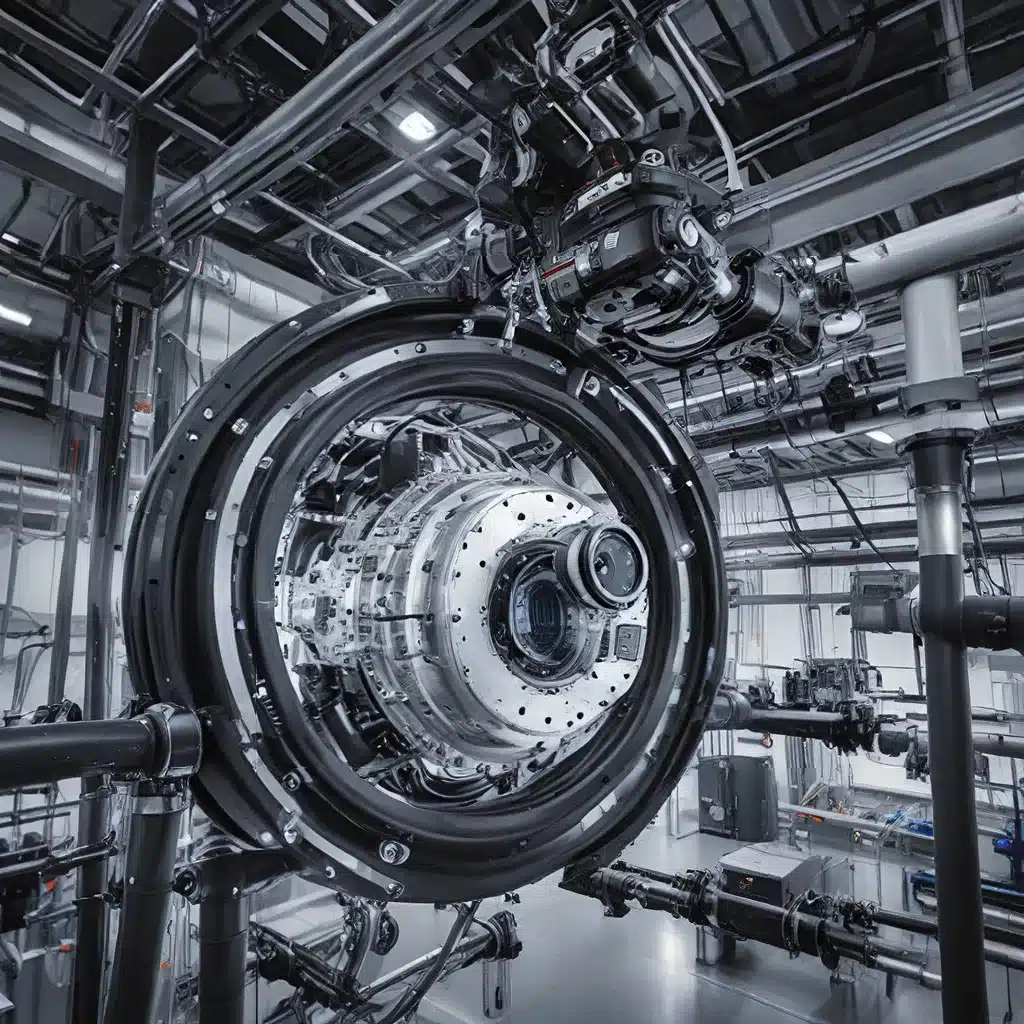
The Rise of Industry 4.0 and Smart Factories
The manufacturing industry is undergoing a transformative shift known as Industry 4.0, or the “fourth industrial revolution.” This paradigm shift is marked by the integration of cutting-edge digital technologies, including the Internet of Things (IoT), cloud computing, artificial intelligence (AI), and machine learning (ML), into traditional production processes.
At the heart of this transformation are smart factories – highly automated, interconnected production facilities that leverage real-time data and intelligent analytics to optimize operations, enhance productivity, and improve responsiveness to customer demands. By equipping manufacturing assets with advanced sensors, embedded software, and connectivity, these smart factories are able to collect vast amounts of big data that can be leveraged to drive predictive maintenance and other game-changing capabilities.
The Role of Sensors in Smart Manufacturing
The sensor network is the backbone of a smart factory, enabling the real-time monitoring and control of production equipment, processes, and workflows. These detection devices are strategically placed throughout the factory floor, gathering critical data on machine performance, environmental conditions, and product quality. This wealth of information, when combined with analytics and machine learning, allows manufacturers to shift from traditional reactive maintenance regimes to more proactive, predictive maintenance strategies.
By analyzing historical trends and patterns in sensor data, manufacturers can identify early warning signs of potential equipment failures, enabling them to schedule targeted maintenance interventions before costly breakdowns occur. This not only reduces unplanned downtime, but also extends the useful life of production assets, optimizing their performance and efficiency.
Predictive Maintenance: Unlocking the Power of IoT and AI
The integration of IoT and AI/ML technologies is the key to unlocking the full potential of predictive maintenance in smart factories. IoT-enabled sensors collect a continuous stream of data from various production assets, feeding this information into cloud-based platforms for real-time analysis and pattern recognition.
Machine learning algorithms can then be trained on this sensor data, allowing them to identify anomalies, predict impending failures, and recommend optimized maintenance schedules. By automating the detection and diagnosis of equipment issues, manufacturers can significantly reduce the time and cost associated with traditional, manual inspection and troubleshooting processes.
Moreover, the digital twin concept, which creates a virtual representation of the physical production environment, further enhances the predictive capabilities of smart factories. Digital twins leverage sensor data to simulate production processes, test changes, and optimize workflows, all without disrupting the actual manufacturing operations.
Securing the IoT Ecosystem in Smart Factories
As sensor networks and IoT devices become increasingly ubiquitous in smart factories, the need for robust cybersecurity measures has never been more critical. The convergence of information technology (IT) and operational technology (OT) systems introduces new vulnerabilities that must be addressed to protect against malicious attacks and data breaches.
Manufacturers must adopt a comprehensive security approach that encompasses both the IT and OT domains, implementing measures such as access controls, encryption, network segmentation, and continuous monitoring to mitigate the risk of cyber threats. Additionally, edge computing strategies, which process data closer to the source, can help reduce the attack surface and improve the overall security posture of the smart factory ecosystem.
Driving Energy Efficiency and Sustainability in Smart Manufacturing
The integration of sensor networks and IoT technologies in smart factories also holds the promise of enhanced energy efficiency and sustainability. By monitoring energy consumption patterns, predictive maintenance can identify opportunities to optimize equipment performance, reduce waste, and minimize the environmental impact of manufacturing operations.
Edge computing and cloud-based analytics can be leveraged to develop energy management systems that automatically adjust production schedules, equipment settings, and resource allocation based on real-time data. This not only helps manufacturers reduce their carbon footprint, but also lowers operating costs and enhances their competitiveness in an increasingly eco-conscious market.
The Future of Sensor Networks and Smart Manufacturing
As the manufacturing industry continues its transformation towards Industry 4.0, the role of sensor networks and IoT technologies will only continue to grow in significance. Predictive maintenance, enabled by the convergence of sensor data, AI/ML, and digital twins, will become the standard for achieving operational excellence and maximizing asset performance.
Moreover, the integration of sensor networks with other enterprise systems, such as enterprise resource planning (ERP) and supply chain management, will drive greater visibility, optimization, and responsiveness across the entire manufacturing value chain. This holistic, data-driven approach will empower manufacturers to meet the demands of the modern, customer-centric marketplace, delivering mass customization and just-in-time production with unparalleled efficiency and agility.
As you explore the future of sensor networks and smart manufacturing, be sure to stay informed on the latest developments, best practices, and innovative use cases that are shaping the Industry 4.0 landscape. By embracing these transformative technologies, manufacturers can unlock new levels of productivity, profitability, and sustainability, positioning themselves for success in the era of the smart factory.